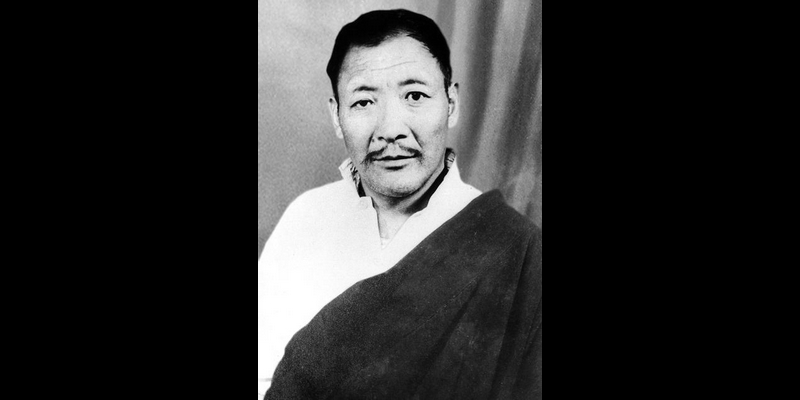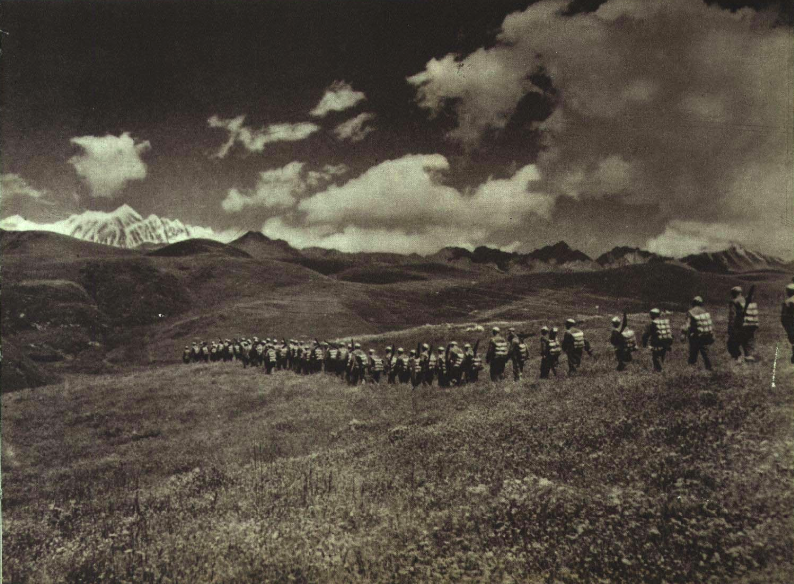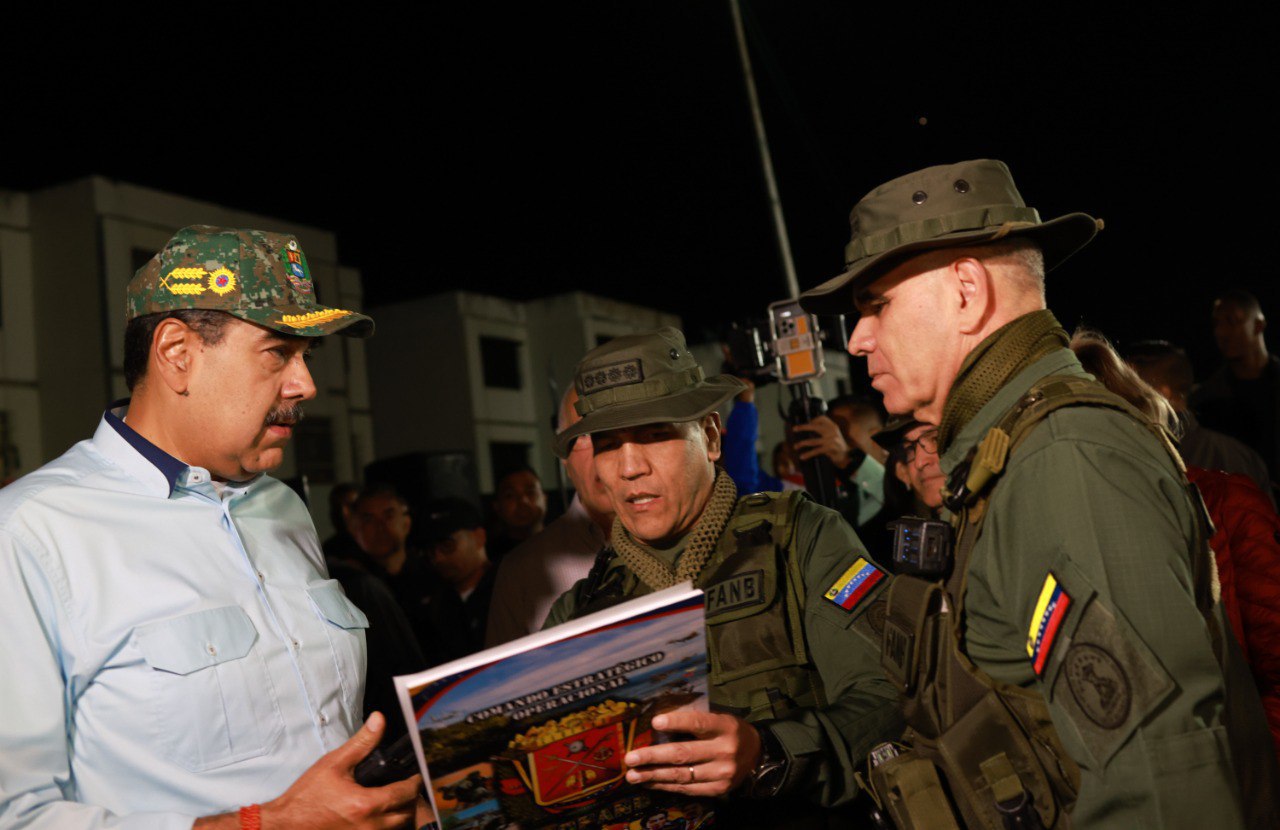Of all of America’s covert actions against communist states throughout the Cold War, one of the least well-known is the CIA’s secret operation to foment a war between Tibet and China, a war which ended in a collective tragedy for Buddhism on Earth greater than anything since the destruction of Nalanda by the Muslim rulers in Delhi and the burning of the Mahavihara.
In our present time, Congressman James McGovern (D – MA) recently introduced a bill into Congress that would begin a propaganda campaign to “ensure that U.S. government statements and documents counter disinformation about Tibet by China’s government,” specifically related to the size of the area referred to as the Tibetan Autonomous Region (TAR).
It is McGovern’s belief that what was historically considered Tibet includes parts of other provinces that today are organized as part of China proper, and that this is some attempt by the Chinese Communist Party to minimize Tibetan identity.
“This bill also states that it is U.S. policy that the conflict between Tibet and China is unresolved and that Tibet’s legal status remains to be determined in accordance with international law,” the summary adds.
Maybe for McGovern and the current Congress, the conflict remains unresolved, having lost nothing in the last attempt to forcefully break out of the sphere of influence of Beijing 70 years ago. But for the entity that is Tibet, that last attempt was a calamity—one brought down on Lhasa perhaps entirely because of President Eisenhower and the CIA’s attempts to encourage the radicals in Tibetan society to believe they could defeat the People’s Liberation Army (PLA) after the invaders had already occupied their country.
The whole program, known as ST Circus, was run with the same political objectives as Nicaragua and Afghanistan—finance, arm, and train local fighters to degrade the communist governments. Military sources cite the history of ST Circus as having an objective to “create a running sore” for the CCP, and convinced tens of thousands of Tibetans to fight in a hopeless 20-year insurgency that generated hundreds of brutal collective reprisals by the PLA.
It was all called off in 1972, after President Nixon felt the political winds changing and decided to open formal relations with China. To the Tibetans, it was the ultimate betrayal, to the CIA it was the signpost to mark a fantastic covert op. To the dead of Lhasa “stacked like cordwood” as eyewitness accounts describe it, it made little difference.
Now, with US-China relations turning sour again, the US is beginning to pick at old wounds, seeking out every way to leverage minority groups inside China to antagonize her. History shows, that in the lands of the Tibetans and the Uhigurs, this ends badly.

“Quite Successful”
The Small Wars Journal describes ST Circus as “quite successful” because “the objectives of the covert action campaign were reasonably limited and achievable with the resources available… the CIA achieved a significant victory for the U.S. with a minimal commitment of American resources: total expenditures per year amounted to roughly $1.7 million dollars.”
The authors reference sources that cite how many soldiers and supplies the PLA had to commit to the Tibetan pacification campaign, how its regional and international standing was marred by the countless atrocities, and, described as most importantly of all, how the operation prevented an Asian brand of communism from entering India.
The claims are reminiscent of the benefits that think tanks today use to describe the funding of the Ukraine war. After 11 Months of fighting in Ukraine, the Atlantic Council released an article hailing all the benefits of open-ended funding of the Ukrainians and the use of their population to fight Russia. It’s degrading Russia’s military, providing the West with valuable intelligence on Russia’s military tactics and equipment, and has “given NATO renewed purpose”—and all it costs is some 300,000 Ukrainian men and women.
The book The CIA’s Secret War in Tibet describes similar optimism among CIA staff at the time of ST Circus. In a similar vein to current Republican presidential candidate Nikki Haley’s inability to name any of the 3 regions of Eastern Ukraine she is so passionate about defending, the Tibetan rebels being armed on the roof of the world generated an “excitement and romance” that left the Langley suits with a “Shangri-la factor” that in part relied on their complete incomprehension of where and what they were doing. Recalling one instance, military sources say CIA Director Allen Dulles was “poking around near Hungary” on a world map while looking for Tibet.
But in the same way that Ukraine’s early successes were soon over-marred by massive losses in Bakhmut and their failed counteroffensive, by March 1959 the Tibetan rebels were routinely being struck with air power, and during an uprising in Lhasa in response to a massacre elsewhere in response to a Tibetan guerilla attack, the Chinese shelled the ancient city, but by morning discovered the 14th Dalai Lama had escaped the city—more massacres followed.
In September, the PLA had located the main Tibetan resistance camp which may have numbered 35,000 people in the high plains. By now the PLA knew the Americans were behind the insurgency, and their fighter-bombers dropped leaflets urging the people not to believe the imperialists and to disperse. Then they dropped bombs—five times a day, killing thousands of men, women, and children, destroying a large stockpile of weapons and supplies provided by the CIA, and dispersing the rest across the plains of Ladakh where most died of thirst.
Aftermath
In Tibet, communist industrialization and collectivization destroyed thousands of Buddhist buildings and sites, slaughtered tens of thousands of monks and nuns, and caused a general famine that wiped out 1.2 million people.
Whether the severity of the takeover was motivated by the 10 years of suffering from the “running sore,” or whether it was par for the course in Chinese society at that time is impossible to know for sure—just as impossible as suggesting that ST Circus prevented India and the rest of “South Asia” from succumbing to Chinese communism; an absurd thing to ascribe to the program’s alleged successes.
As an intelligence organization, the CIA landed major scores long after moving the insurgency across the border to Mustang, Nepal. Raids by CIA-trained fighters captured intelligence that showed the mass famines and failure of the Great Leap Forward and the discontent in the country as a result. Insurgents were also able to install sensors that detected the first nuclear weapons tests conducted by the communists.
In Daniel Ellsberg’s book The Doomsday Machine, the former nuclear war planner and whistleblower details that before 1960, it was already part of the program for general war with the Chinese or Soviets to drop atomic bombs on every Chinese city, so the knowledge value of China’s possession of nuclear weapons didn’t likely change existing or future decision making. In the 1954 Taiwan Straits Crisis, the Pentagon had already placed nuclear weapons on Taiwan aimed at China.
As to the failure of the Great Leap Forward, there was no change in policy between the time that the information was obtained by the CIA, and the launch of Mao’s Cultural Revolution and the Vietnam War in the 1960s
When it came time to close the program down at the urging of Henry Kissinger, ST Circus operations officer Roger McCarthy lamented that “it was more a case of not being straightforward with the Tibetans,” as many felt the Americans were signed up until Tiben was liberated.
The last insurgents laid down their arms at the urging of the Dalai Lama in 1974 before the Nepalese had a chance to attack them, but many of the CIA-trained guerillas didn’t, and either committed suicide or tried to shoot their way through Nepal to India, but were ambushed and killed to a man.
Gyalo Thondup, the Dalai Lama’s elder brother, said in 2009 that America “didn’t want to help Tibet. It just wanted to make trouble for China. It had no far-sighted policy for Tibet”.
Ever since, the value of good relations with a quickly modernizing China has obviously surpassed the Tibet question, and the Tibetans became just another ethnic group armed, used, and abandoned in the United States’ relentless approach to countering other powerful nations with the lives of non-Americans, and the bill which states “the conflict between Tibet and China is unresolved and that Tibet’s legal status remains to be determined in accordance with international law,” is both a herald of trouble, and an admission of supreme failure and guilt. WaL
PICTURED ABOVE: PLA soldiers marching towards Tibet. PC: Public Domain



